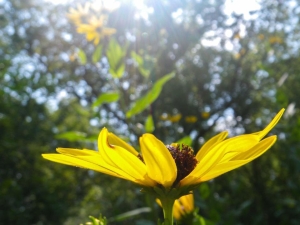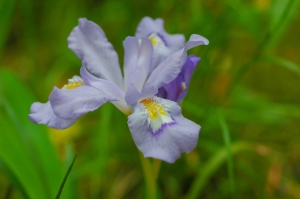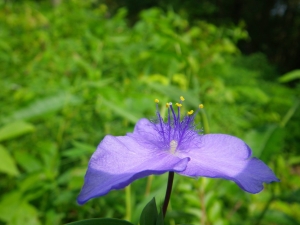
 It’s that time of year again when trees and flowers are blooming, bees are buzzing and our cars are continuously draped with a yellow coat of pollen. Although pollen triggers allergies for many, it is often misunderstood. Pollen is produced by all seed plants, not just flowering plants, and is released in the air all year around. Most trees flower in the spring, grasses in the spring and summer, and weeds in late summer and early fall. Generally, pollen levers are highest from late morning to mid-afternoon and are usually lowest in the early morning hours.
It’s that time of year again when trees and flowers are blooming, bees are buzzing and our cars are continuously draped with a yellow coat of pollen. Although pollen triggers allergies for many, it is often misunderstood. Pollen is produced by all seed plants, not just flowering plants, and is released in the air all year around. Most trees flower in the spring, grasses in the spring and summer, and weeds in late summer and early fall. Generally, pollen levers are highest from late morning to mid-afternoon and are usually lowest in the early morning hours.
 Pollination is a vital part of the reproductive cycle. Wind or insects transfer pollen, and those large, fragrant plants with brightly colored petals that we love this time of year are insect-pollinated plants. The proteins in the pollen grain can trigger an allergic reaction, and some types of pollen trigger allergies more than others. When we inhale pollen, the proteins are released into our nasal passages causing allergic reactions for individuals allergic to that type of pollen.
Pollination is a vital part of the reproductive cycle. Wind or insects transfer pollen, and those large, fragrant plants with brightly colored petals that we love this time of year are insect-pollinated plants. The proteins in the pollen grain can trigger an allergic reaction, and some types of pollen trigger allergies more than others. When we inhale pollen, the proteins are released into our nasal passages causing allergic reactions for individuals allergic to that type of pollen.
 In the U.S., flowering usually occurs in early spring in April or May, but allergy season has come early for Alabama as we have had high pollen counts (a pollen count of 9.7 or higher) since the end of February! The forecast for this week expects pollen counts to be 9.4 and above, with high counts of 10.4 and above hitting us Monday through Wednesday. So although our allergies may be acting up and our cars are a little yellow this time of year, May flowers are just around the corner!
In the U.S., flowering usually occurs in early spring in April or May, but allergy season has come early for Alabama as we have had high pollen counts (a pollen count of 9.7 or higher) since the end of February! The forecast for this week expects pollen counts to be 9.4 and above, with high counts of 10.4 and above hitting us Monday through Wednesday. So although our allergies may be acting up and our cars are a little yellow this time of year, May flowers are just around the corner!
